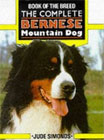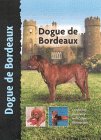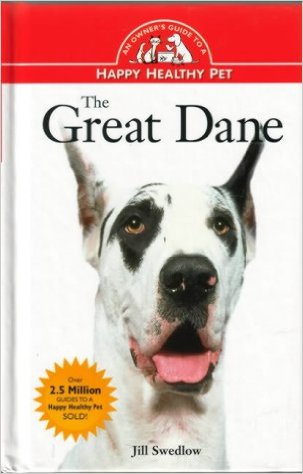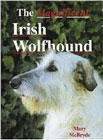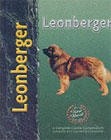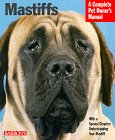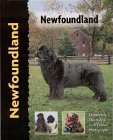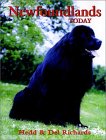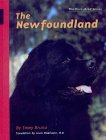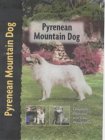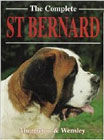Books on Animals: Dogs
Dog Breeds: Giant breeds
(Bernese Mountain Dogs, Bullmastiffs, Dogue de Bordeaux, Great Danes, Irish Wolfhounds, Leonbergers, Mastiffs, Neopolitan Mastiffs, Newfoundlands, Pyrenean Mountain Dogs, and St Bernards.)
If you want to buy a book, clicking on the book cover will take you directly to that book on the Amazon.co.uk web site.
See also:
- Dogs in recent history and different cultures
- Books on origins, canine evolution and wolves
- Behaviour (canine ethology and behavioural problems)
- Puppy and manners training
- Breeding, grooming and kennel management
- Fiction dealing with dogs
- Skill training: Agility and training games
- Skill training: Sheepdog, gundog and scent work
General overview
The dogs in this category are all big. There are some wonderful breeds here, but think carefully before you take a decision to share your life with one of these dogs. They not only occupy a lot of space on the bed and block your line of vision to the TV, these very big breeds also tend to be vulnerable to a range of health problems which can cut short their lives. Common health problems include bloat, abnormal bone growth, and cancer. There are other large breeds which share this vulnerability to bloat, especially among sighthounds, but giant breeds are especially prone to bloat. It's a condition caused by a build-up of gas, which can lead to torsion, or twisted innards, and the gas being trapped, which is very painful and can be fatal unless treated rapidly.
There have been a number of studies on bloat. Recommendations include feeding at least two small meals rather than one large meal, and giving dogs rest before and after they eat. Previous thinking was that the best position of the feeding bowl was to be raised, but this has changed, and it is now thought to be better to have the bowl at ground level. There may be a genetic element to this vulnerability to bloat. Bone growth is affected by both feeding and exercise, so it's important to give your pup the right food and the correct level of exercise for his age. A vet should be able to advise you on the latest research on food and exercise, and give advice to avoid both bloat and bone problems. Hypothyroidism is also common in some of these breeds, such as Mastiffs, Neopolitan Mastiffs, and Great Danes, and it has been linked to both skin and behavioural problems.
It is always worth checking on the longevity of the ancestors of any pup you take on, but this is especially true in the case of giant breeds. Don't believe what thumbnail breed guides tell you about how long these dogs live, since surveys of actual dogs often paint a different and more depressing picture. Go up the family tree of any pup you are interested in, and find out whether the dogs in it are still alive, and if they aren't, how old they were when they died. This gives you some idea of how common early deaths are. Then add up total years, and divide by the number of dogs, to get a rough idea of the average longevity of a particular line. It's worth doing this before you see the pup, and common sense flies out of the window because you become mesmerized by how cute the pup looks!
People who own big dogs are usually well aware of the need for proper training - many would love to be lap dogs and jump up to greet you, and they need to learn some self-control. Irish Wolfhounds are sighthounds, and the size of a small pony, so if they pull on the lead, you tend to go with them. Good manners are best taught from puppyhood, because it's easier, but adult rescue dogs can still learn fast. The best time to teach good manners to a rescue dog is as soon as the dog arrives. That is when the dog is watching you to learn what the rules are. It's tempting to spoil the dog a bit, because you feel sorry for him or her. But it's kinder in the long run to let the dog know gently and firmly what you consider to be appropriate behaviour. Rescue centres usually have their own behaviourists and provide ongoing help for adopters. Gwen Bailey's 'The Rescue Dog' is also full of good advice.
Many other breeds mentioned here were developed as livestock guarding dogs, and they include Mastiffs and Pyrenean Mountain Dogs. A dog whose job it was to guard a flock had to be independent, and able to take decisions without the owner being present, as well as trustworthy enough not to eat lambs - though they were also carefully socialized with flocks. This independence and generally calm nature is evident in the breeds kept as pets - some owners describe them as gentle and stubborn. The independence means that patience and persistence is needed in training them. These breeds also have a natural tendency to guard, so don't need to be taught their job, rather it's wiser to socialize them as much as possible with people, not just when they are pups, all through their lives, so they continue to be accepting of people you want to bring into your home. Socialization with people won't prevent them from being good guard dogs and looking imposing enough to deter intruders, while it does mean that they will allow you to have visitors in your home, and that small children should be safe if they stray into your garden. Some natural guard dogs, such as Neopolitan Mastiffs, are best reserved for experienced owners, since they can be challenging dogs in terms of character, as well as being very powerful.
Even gentler dogs like Newfoundlands whose job it was to rescue people also tend to be independent souls, since they also had to take decisions alone, so again they need patience, consistency and a fair amount of skill in training. It's well worth finding yourself a good trainer who enjoys working with these breeds, especially if you are a novice owner. It's also a good idea to research the ancestry of any large-breed pup you plan to take on, to check for temperament. It is safer to have calm, even-tempered dogs, capable of learning to back off when their owner asks them to. Very big dogs which are easily spooked are more likely to bite out of fear, so a stable, predictable temperament is important. Boldness can be an advantage, since it means that a dog is less likely to be spooked, so long as the bold dog has been taught good bite inhibition as a pup, and its inclination is to stand in the way of uninvited visitors, rather than attack them. The visitor could be a friend or child who has innocently walked into your house. Working with a big, courageous dog takes a lot of commitment in terms of your time spent training the dog. They also eat a lot, shed more than smaller dogs with similar coats, as there is more of them, and it helps to find a vet who is used to dealing with very big dogs.
Some breeds, such as Bullmastiffs, Neopolitan Mastiffs and Great Danes, may take a dislike to some or all other dogs when they become adults, despite careful socialization. It is safer to walk in areas or at times when there are few or no other dogs about, and keep your dog on a lead. You may also need to deter owners of other dogs who let their Fluffy come and yap in your dog's face, reassuring you that Fluffy is very friendly. Some owners of dog-aggressive dogs use a muzzle on walks, though muzzles don't always give total protection, and close encounters with other dogs are best avoided. Dogs off the lead which plague your dog and risk their own life and limb can often be deterred with a water pistol - so long as you can find one that doesn't leak in your pocket.
Obedience training is especially important for those breeds which have a tendency to dislike other dogs, so that you can safely take them out in public places. You may not be able to get your dog to be friends with other dogs, but he should be able to ignore them and pay attention to you.
Should very big dogs be walked off-leash in public places? This depends on how trustworthy they are, and how safe the public place is. Generally, Newfoundlands and St Bernards can be let off fairly safely, and much more caution should be exercised with the other breeds. Irish Wolfhounds are generally friendly, but can knock people over with a sighthound dash. Individual dogs vary greatly in terms of how trustworthy they are. All dogs need excellent recall in a fenced area like a garden before you risk letting them loose in an unfenced area. You have little hope of getting them to come back in a public place with distractions, like other dogs, if they won't do this every time you call in a controlled environment like a garden. Practise recall every day until your pup obeys every time, and carry on practising it, adding distractions after the basic recall has been mastered. You need to be sure that your dog is proofed against temptations he is likely to meet, such as screaming, rushing children, and other dogs playing games, before you let him off anywhere near people. You can arrange recall exercises with distractions in a safe, fenced area. If in doubt about your dog's recall, keep him on the lead.
Adolescent dogs tend to cause the most problems, because they are usually livelier, and can go through spells of being less obedient than you expect. Youngsters can be very frightening to some people just because of their size, however friendly their intentions. The dog's intentions could be misinterpreted, and someone who does not understand dogs may fear that a friendly greeting means that the dog is going for their throat. This may sound daft to you, but if it could still result in a court case. Some of the more dog-aggressive breeds may also surprise you by suddenly reacting badly to other dogs, especially as they go through adolescence. Again, it's safer to be cautious, anticipate trouble, and keep these dogs on the lead when other dogs are about. A dog-aggressive individual of a very large, powerful breed can seriously injure or kill another dog, and it can happen very fast. The trickiest areas to walk big dogs are those places that are densely populated with children and/or other dogs, and it's safest to keep your dog on the lead in those areas. The best areas to walk big dogs are open spaces a long way from traffic, where not many people walk, and where you have a good line of vision, so can avoid trouble. Then it's possible to let dogs with good recall off the lead, calling them to put them back on the lead if you see anyone approach they might annoy. Dogwalkers who walk the same area regularly at the same time tend to get to know each other, so you and your dog are likely to work out quite quickly who you both get on with. Letting your dog off the lead is ultimately an issue of personal responsibility, and assessing risks. Keeping him on the lead when in doubt, and teaching him good manners, is much safer, and can win you both a lot of friends.
'Health warnings' apart, these are magnificent breeds. People who have the space to house dogs of this size can enjoy the company of dogs with presence. Well-bred, well-trained and well-socialized individuals are usually gentle giants, very tolerant of, and well bonded to their own 'human family'.
Breed Profiles

The Bernese Mountain Dog: An Owner's Guide to a Happy Healthy Pet
Bernese Mountain Dogs are very attractive dogs with tricolour markings and thick coats, which look cuddly and stay puppyish for a long time. They aren't as big as some of the dogs featured on this page, but still look larger than life. They were developed as general purpose farm dogs, carrying out duties such as herding, guarding and even pulling heavy burdens.
They can learn herding, but tend not to perform as well as the more specialized herding breeds. They need a skilled trainer, since they learn fast, but they are sensitive dogs and can sometimes get confused and anxious if they are not trained patiently.
Read more: The Bernese Mountain Dog: An Owner's Guide to a Happy Healthy Pet

The Complete Bernese Mountain Dog (Book of the Breed)
This is a little more in-depth than Crawford's book, and is well-researched and up-to-date. it is also very well illustrated. It's a bit more expensive than Crawford's book, but is more likely to interest experienced owners, since it provides more in-depth coverage of the breed.

The Bullmastiff Manual (The World of Dogs)
Bullmastiffs were developed as guard dogs and for catching poachers. They are part Mastiff, crossed with the ancestor of Bulldogs. They are not quite as tall or as calm as Mastiffs, though they are calmer than most bull terriers. They are strong-willed dogs which tend to bond strongly with their human family, and love attention. This desire for attention can be harnessed in training them. Well-trained and well-socialized Bullmastiffs tend to be very good with children, though they are not always well-behaved with other dogs, even after socialization as pups.
These dogs are natural guard dogs, and will detain intruders. They should not be taught to distrust strangers. Even well-socialized Bullmastiffs tend to be reserved with strangers, and are bold and fearless if threatened. They are large, powerful dogs. Extensive and ongoing socialization is important, as is training, so you can get your dog to leave people alone when you ask. They need to have house rules made clear to them from when they are pups, and taught not to jump up or pull on the leash, from when they are little, because they don't stay little for long. They can switch off if they are shouted at in training, and benefit from working with a calm, even-tempered trainer.
Bullmastiffs are best kept by people who have a lot of space, because they need exercise to stay fit, and it's not always easy to take such big dogs out on walks, especially if they take a dislike to some of the local pooches. They do benefit enormously from going out and about though, even if you have to time your walks so they don't have to meet a lot of other dogs. Bullmastiffs don't do well in outdoor kennels, tending to prefer the company of their human family. They are not dogs to leave tied up unattended on a chain, since they don't stand sun or cold well, they suffer if they are left isolated, and are not safe from being teased by people at a distance. Anyone who teases and comes close to a chained Bullmastiff could be hurt, and seriously hurt in the case of a child. A Bullmastiff left outside unattended a lot is also likely to develop behavioural problems.
Common health problems include tumours, hip dysplasia, bloat, heart disease hypothyroidism, and eye trouble such as entropion. Like most members of the bulldog family, they may suffer from breathing difficulties and snore, as well as drool. They also tend to suffer from extremes of heat or cold. They do need exercise, but are not running-around dogs, and prefer to walk at a dignified pace with their owners. Bullmastiff pups shouldn't be pushed into overexerting themselves by jumping a lot, since this can affect their bone growth.
This book is a classic which has been revised and updated, There is help on all aspects of Bullmastiff ownership, as well as a lot of information about the breed and how it is kept. It's clearly written, and is very helpful for novice Bullmastiff owners, as well as being informative enough to interest experienced owners, It's also very well illustrated.

Dogue De Bordeaux
The Dogue de Bordeaux is a powerful, strong-willed dog which has some similarities to the Neopolitan Mastiff. Well-bred individuals are generally calm and well-behaved with people they know, and they can be very good with children who respect them, but young dogs can easily knock over children in play, and have been known to knock over adults. These dogs may also drool all over you. Pups need to be taught not to jump up, and to play gently with people.
The modern version of this breed is generally patient and tolerant with its human family, but the breed was originally designed to be aggressive, and it is important to check the temperament of both parents of any pup you are interested in. The Dogue de Bordeaux is a natural guard dog, which should be socialized extensively as a pup, so that the adult is safe with people. Socialization should continue throughout the dog's life. Teaching your dog to behave well with a range of people will not prevent this breed from carrying out guard duties - it has a naturally strong drive to guard and protect.

Your First Great Dane
Great Danes are a magnificent breed, more refined than a mastiff, though they probably have fighting mastiff in their background. Careful socialization of puppies is very important with a dog of this size, both with humans, and you need to find them puppy playmates who are robust enough with withstand their strength.
Training should start from when they are pups, since it's easier to teach them the rules while they are small. Well-trained and well-socialized Great Danes are generally friendly with people they are introduced to by their owners, and are still capable of looking serious with uninvited guests. It is counter-productive to try to teach them to be guard dogs. Few intruders would want to walk past a Great Dane standing in their path, even if the dog looked friendly.

The Great Dane (An Owner's Guide to a Happy, Healthy Pet)
This is a very good guide to caring for and training a Great Dane throughout all life stages, from puppyhood to old age. There is a lot of help with general care, including health care, and the joys of living with a giant breed. There's also a good account of the breed's history, and there are tips on showing. Ideas are set out for activities to do with your Great Dane, such as obedience trials and games. The book is also well illustrated.

The Irish Wolfhound
Irish wolfhounds are very big dogs indeed, and just one can make your house seem very small, often knocking things over without meaning to. They do best with a large, fenced garden, like most sighthounds, and also like being taken for walks. They are usually affectionate, and get on well with children, though they should be supervised with smaller children, because they are such big dogs and can easily knock people over if they get boisterous.

Magnificent Irish Wolfhound (A Ringpress Dog Book of Distinction)
Mary McBryde has written a very useful up-to-date reference book for Irish Wolfhound owners, It's a little expensive, but well worth the investment, because the breed needs quite a bit of care to avoid common health problems. This is especially true during puppyhood, since food and exercise are critical to the development of Wolfhounds.
This book is clearly written enough for a novice, and has enough information for experienced owners. It's certainly worth reading if you plan to take on Wolfhounds, since they can cost a lot in feeding and vet bills, and take up a lot of space. Choosing a pup is important, given the prevalence of inherited health problems, and there is help with this. The book is honest about the demands made by the breed, but also helps you cope with them, and conveys the joys of owning an Irish Wolfhound.

Leonberger (Pet Love: Special Rare Breed Edition)
Leonbergers are very big, strong, handsome dogs with tawny coats, though their majestic appearance is sometimes spoiled by drool. They have thick manes, bushy tails, and feet designed for swimming. Leonbergers are generally calm, even-tempered and affectionate. They have been used as watch dogs, sled dogs and tracker dogs, though they should have exercise carefully regulated and should not overexert themselves while they are growing.
These are big dogs, they can be bigger than St Bernards, and can easily knock over small children and other dogs, so they need obedience training from when they are pups. Recall, and learning to walk on the lead without pulling are especially important.
Read more: Leonberger (Pet Love: Special Rare Breed Edition)

Leonberger (The World of Dogs)
This guide to Leonbergers was written by someone who has several of these dogs, and she gives a very clear idea of what it's like to live with them. It's a very useful reference book both for novices and experienced owners, with a lot of help with training and behaviour. There's also help with nutrition, and other aspects of caring for this breed. It's more expensive than the Pet Love guide, but you get more for your money.

Mastiffs: Everything About Purchase, Care, Nutrition, Grooming, Behaviour and Training (A Complete Pet Owner's Manual)
Mastiffs are very large, powerful looking dogs which were developed to guard livestock. They are generally calm, though individuals vary. Like all large dogs, they need to be carefully socialized with people and other dogs, and trained in acceptable behaviour while they are small, and it is easier to get them to do what you want.
Well-socialized and well-trained Mastiffs can be excellent companions for children, though they need supervision, since they are very large dogs which can easily knock small children over. Many children have fond memories of playing with mastiffs, and generally these dogs are patient, with nice natures. It is important, however, to check out parents of possible pups, to see if they are friendly with stable temperaments. Mastiffs can vary in terms of how pushy and headstrong they are, and how friendly they are with strangers. A family Mastiff needs to be especially calm and friendly. It's worth asking breeders about the characteristics of their lines, and looking at pups from different litters, as well as comparing pups from the same litter, so you have the best chance of finding a pup that is likely to suit you.

Neapolitan Mastiff: Complete Handbook
Neapolitan Mastiffs are big, powerful dogs which can look quite fearsome, but well-bred, well-socialized and well trained individuals are generally calm and affectionate with people they know well, and very good with children who respect them. They develop strong bonds with their human family.
Socialization is very important throughout the dog's life, starting from puppyhood, so that they behave well with your visitors and allow you to let people in! Neopolitan Mastiffs also need to have house rules set out clearly from when they are pups, and this should include not jumping up, and no rough games indoors, since they grow to be very big, and what is acceptable in a pup can become a problem with an adult dog.

The Official Book of the Neapolitan Mastiff
This book is an in-depth guide to Neopolitan Mastiffs which is a very useful reference book for novice and experienced owners alike. It is a little expensive for a breed guide, but is likely to be used a lot in the dog's lifetime, so is worth the investment.

Newfoundland (Pet Love)
Newfoundland dogs have many staunch fans, for they are a very tolerant, cuddly breed, and larger than life. One of their roles as working dogs is to rescue people from water, and they are also good retrievers. They have been credited with saving many lives, and are designed to be excellent swimmers.
They are generally very friendly, tolerant dogs, and good with children. The working background of Newfoundlands makes them more suitable as family pets than the guarding breeds, because Newfoundlands are more likely to behave well with your children's friends when they call round. They are generally very patient dogs with small children, but can still knock children over, since they are such big dogs, so supervision is important.

Newfoundlands Today
This book is a very good guide to Newfoundlands with extensive information on the breed's history, and good advice on choosing a pup. There's also a lot of help with breeding Newfies, and some good advice on health care. It's a useful reference book for experienced Newfoundland owners, as well as a good introduction for novices.

Newfoundland
Emmy Bruno has written a useful guide to Newfoundlands which is of especial interest to people wanting to breed these dogs. The book is a little expensive for a breed guide, but the amount of detail provided makes it worthwhile, for people who are especially interested in the breed's history, breed standard, and other issues relating to breeding. There is also good advice on general care, including health care.

Pyrenean Mountain Dog (Berger Des Pyrenees) (Pet Love)
Pyrenean Mountain Dogs, also known as Great Pyrenees and Bergers Des Pyrenees, are large, thick haired dogs which are mainly white, with some colour on their faces. They were originally livestock guarding dogs, and shepherds tended to favour white dogs, because it was easier to tell the difference between them and wolves which might be stalking the flock. They have also worked as draught animals and rescue dogs.
Pyrenean Mountain Dogs can usually perform well in terms of obedience, so long as ground rules are set out consistently from when they are pups, because they are quite independent.. These dogs are usually calm, courageous, affectionate with their human family, and often reserved with strangers. They are generally good family dogs, and tolerant with children of the family, though of course supervision is important due to their size, and they need to be socialized with children, like any dog.
Well-socialized Pyrenean Mountain Dogs usually tolerate other dogs, though some males sometimes take a dislike to other male dogs. They usually get on well with any cats in the household. Pyrs can be quite barky as a breed, which is good if you want a large, imposing watchdogs. They may drool, and they tend to shed a lot in the spring. Their thick coats mean that they can suffer when it is hot, especially if they do not have access to shade. This means that they should be walked in the early morning and after dusk, when it's hot. They do need regular walks to keep fit, but their recall is not always instant, so they need a safe fenced area, or one that is away well from traffic, if they are to be let off the lead. Common health problems include skin problems, hip dysplasia and other problems common to large breeds, such as bloat and abnormal bone growth.
Juliette Cunliffe's guide is a good introduction to the breed, which gives help with training as well as advice on general care, including nutrition and health care.

The Complete St Bernard (Book of the Breed)
St Bernards are famous as rescue dogs. They are generally gentle, friendly, and very patient and tolerant with children. They are very similar to Newfoundlands, and, like Newfoundlands, need to be taught house rules while they are pups, including no rough games indoors. They are such big dogs, that they can easily knock over small people, not to mention treasured ornaments. Like Newfoundlands, they are droolers, withstand cold well, and shed a lot in spring time.
St Bernards can also be quite barky, and their barks are loud and deep. This means that they can be good watchdogs, though they are too friendly to be guard dogs. There are two types, longer and shorter haired St Bernards, and neither needs a lot of grooming, though regular brushing helps them to look good and cuts down on shedding. These dogs need especial care with their diet and exercise while they are growing, to avoid problems with bone development. Other common health problems include heart trouble, hip dysplasia, and entropion. They can also suffer when it's hot, so should only be walked in the early morning or after dark, during periods of hot weather. St Bernards don't need a lot of exercise, though they do benefit from regular walks, preferably at least one a day to keep fit.
They are, sadly, not a long lived breed, even for a giant breed, and heart problems are all too common. Anyone interested in a St Bernard pup should do a lot of research on the longevity of the pup's ancestors, and ask themselves whether they could cope with losing their dog after a relatively short time. This guide gives an excellent overview of the breed, with good advice on general care, as well as an informative account of the history of the breed as a rescuing dog, and its rise in popularity as a companion dog.

Big Dog Breeds
Dan Rice is a vet and well-known dog author. Here he has written an extremely useful guide to the care and health of big dogs, which is especially useful for its information on how to prevent health and other problems associated with large breeds. The first part of the book gives help on all stages of dog ownership, from finding a breeder, and choosing a pup, to training, health and diet, breeding, and coping with the loss of your dog. Some big dogs tend to have short lives and are prone to particular health problems, especially the giant breeds, so the information in this book is important for anyone who owns or plans to own such a dog.
The second part of the book deals with different big dog breeds, with a breed profile for the most popular breeds. This book is very useful for all dog owners, because there is so much information set out in a clear, common-sense way. Big dog owners have to be especially careful about diet and how the dog eats, to avoid problems that particularly afflict big dogs, like gastric dilation and volvulus. One piece of advice needs to be updated, however, and that is the recommendation for big dogs to be fed using raised bowls - recent thinking has changed, and ground-level bowls are seen as safer. Otherwise, the advice is generally sound and clearly explained in a helpful way.
Latest book reviews
Latest news and research
- Impact of facial conformation on canine health: corneal ulceration
- Prevalence of disorders recorded in dogs attending primary-care veterinary practices in England
- Disease control through fertility control: secondary benefits of animal birth control in Indian street dogs.
- Quantifying sources of environmental contamination with Toxocara spp eggs.
- Clostridium difficile in faeces from healthy dogs and dogs with diarrhea
- Impact of canine overweight and obesity on health-related quality of life
- Effect of a diet enriched with green-lipped mussel on pain behavior and functioning in dogs with clinical osteoarthritis
- Short, unstructured session with a dog reduces anxiety levels in students, and improves their mood
- Research suggests canine companionship helps calm children undergoing cancer treatment
- Dingoes in the dock
Care and behaviour of dogs
- Acknowledgments and further reading
- Aggression
- Appetite Loss
- Attention Seeking
- Barking
- Basic training
- Behavioural problems
- Behavioural problems in dogs
- Being sensible with traffic
- Bitches In Season
- Biting
- Canine Social Cognition, part 1: Dogs are special
- Canine Social Cognition, part 2: Differences between dogs
- Chasing Cars, Bikes, Joggers, Cats etc.
- Choosing a dog
- Coming when called
- Designing and using a dog garden
- Destructiveness
- Do you want your pet dog to have puppies?
- Dogs and diet
- Dogs don’t bite humans
- Dogs: Bringing up your puppy
- Dogs: Helping dogs with sound phobias, and fear of fireworks
- Fighting
- Finding a good training class
- Greeting guests politely
- Jealousy
- Jumping Up
- Learning that some animals are prey, others are not
- Mounting
- Multi-dog households: Enjoying life with more than one dog
- Phobias
- Poo Eating
- Possessiveness
- Recall
- Respecting other dogs in the household
- Respecting passers-by, human and canine
- Separation Anxiety
- Stealing
- There are acceptable and unacceptable places to perform (housetraining)
- Toilet Training
- Travelling safely in cars
- Using Flexileads safely
- Vet Phobias
- Walking nicely on the lead
- Walking On The Lead
- Wolves, Dogs and Humans


